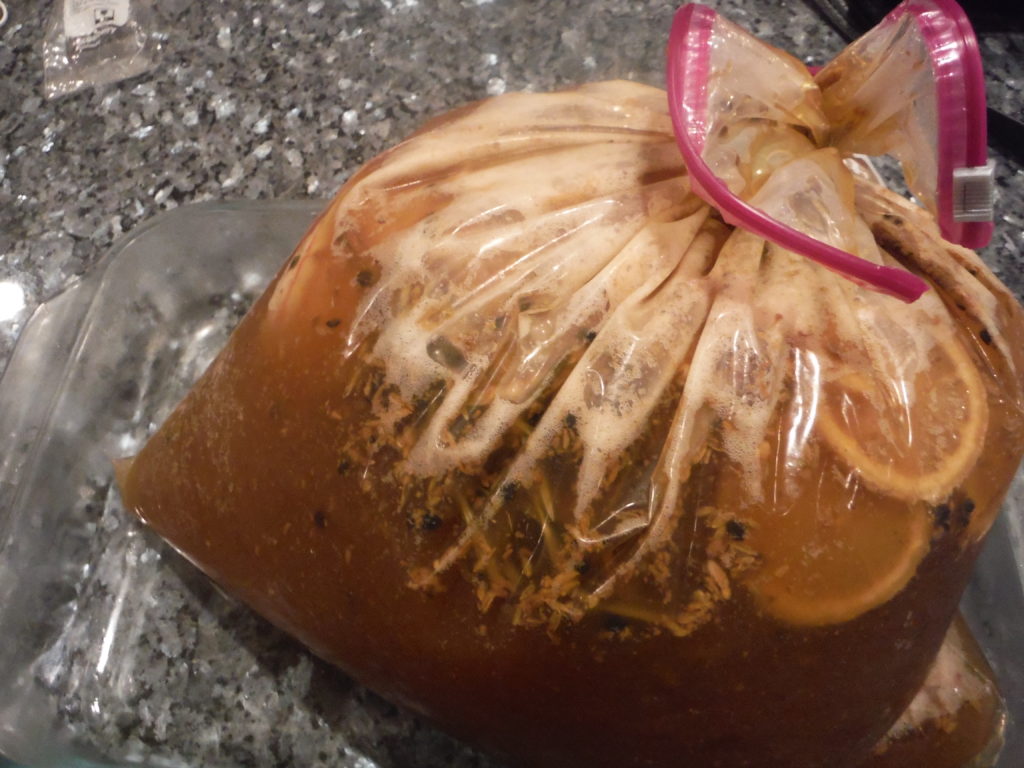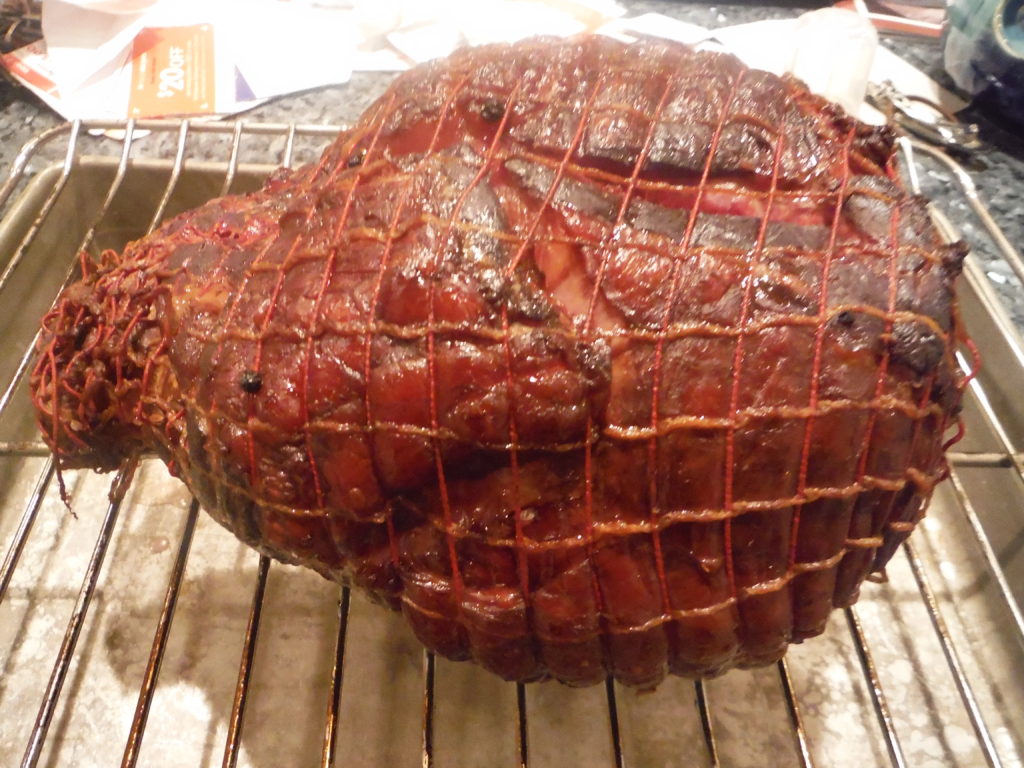Popular in the colonial era, making hams from a leg of lamb fell out of favor, so much that I had never heard of such a thing. An article in NPR discussed a revival of lamb ham, and mentioned that the well-known Edwards Smokehouse in Surrey has started making country hams from lamb. This all got my curiosity going, so I had to make a lamb ham. The result was very tasty, a cured meat which is very ham-like, but with an undertone of lamb which makes it unique. So far I have eaten it pan fried like bacon, with mustard on the side, and it was delicious. This is how I made it, which was an adaptation of a recipe from “The Grocery” in Charleston, which appeared in the NPR article.
1 boneless leg of lamb (Costco is a good source)
1 gallon of water
350 grams kosher salt
300 grams brown sugar
50 grams Insta Cure No. 1 (pink curing salt)
10 grams crushed peppercorns
1 lemon, sliced
2 sprigs rosemary
10 grams fennel seed, crushed
Bring the water to a boil, and dissolve the salt and sugar. Let it cool to room temperature, and then add the insta cure, peppercorns, lemon, rosemary, and fennel seed.
Rinse the boneless leg of lamb and put it in a 2 gallon ziplock baggie. Add the brine and then squish out all the air so that the lamb is fully in the brine. Close the baggie, put it in a pan, and put it in the refrigerator to cure for 6 days.
After the cure, remove the meat from the brine, and put it on a rack in the pan back in the refrigerator to dry for a day. Heat up an electric box smoker and smoke it at 200 degrees until the internal temperature reaches 150 degrees, about 5 hours.
Allow to cool. Slice and use as you would ham or bacon.





I made this for Thanksgiving and was overall very happy. One point I would make is that I had a rather large leg from my butcher that was tied into a roast. It was a 4.75 roast that I followed the directions on meticulously. After a 6 day cure I let it dry in the fridge for a day. After that I smoked it to 145 over about 4.5 hours to IT of 145. When I cut it, it was clear that the nitrate did not penetrate to the center of the meat. There was a clear ring of pink and brown meat about 1 inch from the center.
The 6 day cure may work well for a 2-3 pound leg packaged into a roast, but if you have a large 4-5 leg in a roast, I would recommend a longer brine, up to 10 days to ensure penetration to the center. Using nitrates with the salt, this should be safe, but I would leave it up to you do decide what you are comfortable with. Just be aware that at 6 days, the nitrate cure may not penetrate to the center of a large roast. Other than that, it was a very popular dish for family that did not like turkey.
There is a curing calculator on amazingribs.com that does the mass transfer calcs based on thickness. Or you can inject if you lack the time.